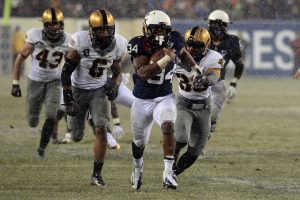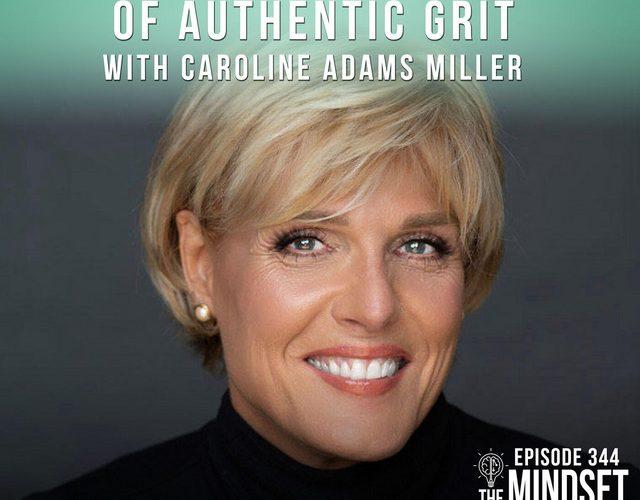From the February 2017 issue of Live Happy magazine.
By Amanda Gleason
Turn slim chances into endless possibilities.

Take the pressure off
One way the team maintained focus was simply by relaxing. “I don’t think anyone on our team felt pressure,” Gary says. A big reason for that: Gary discovered a newfound calmness in his coaching career last year, a trait he says came over him once he started reading the Bible every day.
Root, root, root for the underdog
It’s no secret that most people love to pull for the underdog. Countless studies have backed up this phenomenon, including one published in 2007 in Personality and Social Psychology Bulletin. When 71 participants were asked which imaginary team—one ranked higher than the other—they hoped would prevail in an Olympic swimming event, 75 percent said they preferred to see the lower-ranked team win.
“People love to be awed and inspired,” says Caroline Adams Miller, a certified professional coach and author of Creating Your Best Life and Getting Grit. “It’s built into our DNA.” She says the inspiration we feel when we see people outperform themselves causes us to release oxytocin, frequently referred to as the “love hormone”—which makes it easy to see why we get so attached to underdogs.
This affinity for the “little guy” extends beyond sports. Southwest Airlines, Apple and even political candidates have gained notoriety and loyal followings due to underdog status. That makes you wonder: What if we could tap into the mindset of underdogs? What enables them to overcome the odds, and how can it be developed?
In his 2013 book David and Goliath: Underdogs, Misfits, and the Art of Battling Giants, Malcolm Gladwell explains how we often overlook the advantages that go along with being an underdog. He writes: “It can open doors and create opportunities and educate and enlighten and make possible what might otherwise have seemed unthinkable.”
How sweet it is
It turns out, we can learn a lot from all types of underdogs—whether we’re talking about a College World Series team or two self-described “hippiedippy” 20-somethings with a love of ice cream and breaking the rules.
Ben Cohen and Jerry Greenfield met while running track in seventh grade gym class, the two slowest of the pack—quite fitting for the duo, as their underdog status would follow them into adulthood and eventually be their claim to fame.
By the mid-1970s, Jerry had tried unsuccessfully to get into medical school, while Ben had dropped out of college and attempted to become a potter—only no one wanted to buy his pottery.
The solution: They liked hanging out, and they liked eating, so they decided to go into the food business together. Their two favorite foods were ice cream and bagels, and since the machinery required for bagel-making came with a much heftier price tag than that of ice cream, the decision was simple.
At war with a behemoth
Ben and Jerry didn’t fit the mold of your typical businessmen when they launched their ice cream business nearly 40 years ago—and it has made all the difference.
“Embrace who you are and make that your strength,” Jerry says. “We wanted to be ice cream ‘for the people,’ and not an elegant treat just for some. Hold on to your beliefs. If you don’t like the way the model is, then think about changing the model to fit who you are.”
A growth mindset
Everyone has had moments of success—those times when we’ve pulled something off that we’ve been working really hard toward. Our brain is flooded with happy endorphins, and we never want the feeling to end. What we probably don’t realize, though, is that the high we gain from continued wins can be incredibly addictive.
An interesting thing happens when we become accustomed to success. “Neurologically, it changes some things in our brain,” Michelle says. “We start to attach our success to our sense of identity. Then we can begin to fear if we’re not the winner, who does that mean we are?”
That’s where underdogs have the upper hand, since they’re not burdened with that addiction to success. “The underdog mindset takes the pressure down,” Michelle says. “It changes the way our brains are working chemically, and it opens us up for learning and growth.”
Taking the focus off winning and instead turning our attention toward learning and development is what psychologists call having a growth mindset—a key ingredient to an underdog’s success.
Underdogs try harder
According to Caroline, people are often further motivated when they don’t quite get to the finish line the first time around—a concept researchers refer to as the psychology of the near miss, which is a type of failure that comes close to being a success.

Don’t worry, be happy
Don’t forget your ‘why’
“You have to have a sense of passion,” Michelle says. “It’s really hard to persist as an underdog if what we’re chasing isn’t meaningful to us, because otherwise falling down just gets too painful for most of us.”
Whether it’s launching a business, winning a sports title or achieving the countless other goals that lie within us, we’ve all probably felt at one point like insurmountable odds might get in the way. Luckily, lessons learned from successful underdogs can help guide us on our own paths to success.
“If you’re going to be elite, every now and then you’re going to have to be an underdog,” Caroline says. “If you’re an underdog, it means you’re definitely not guaranteed a win—you’re shooting for the moon. Everyone should learn how to do that.”






